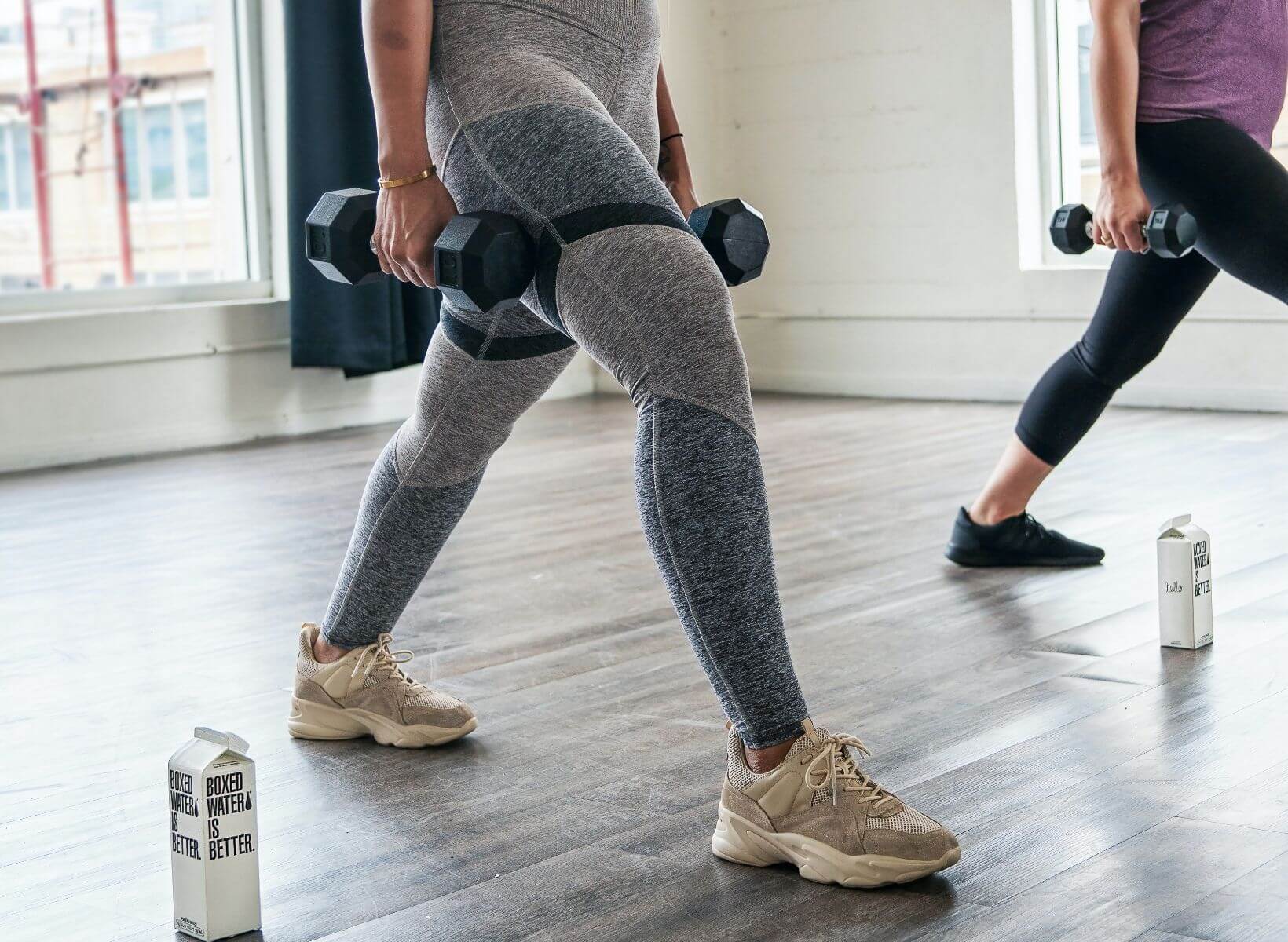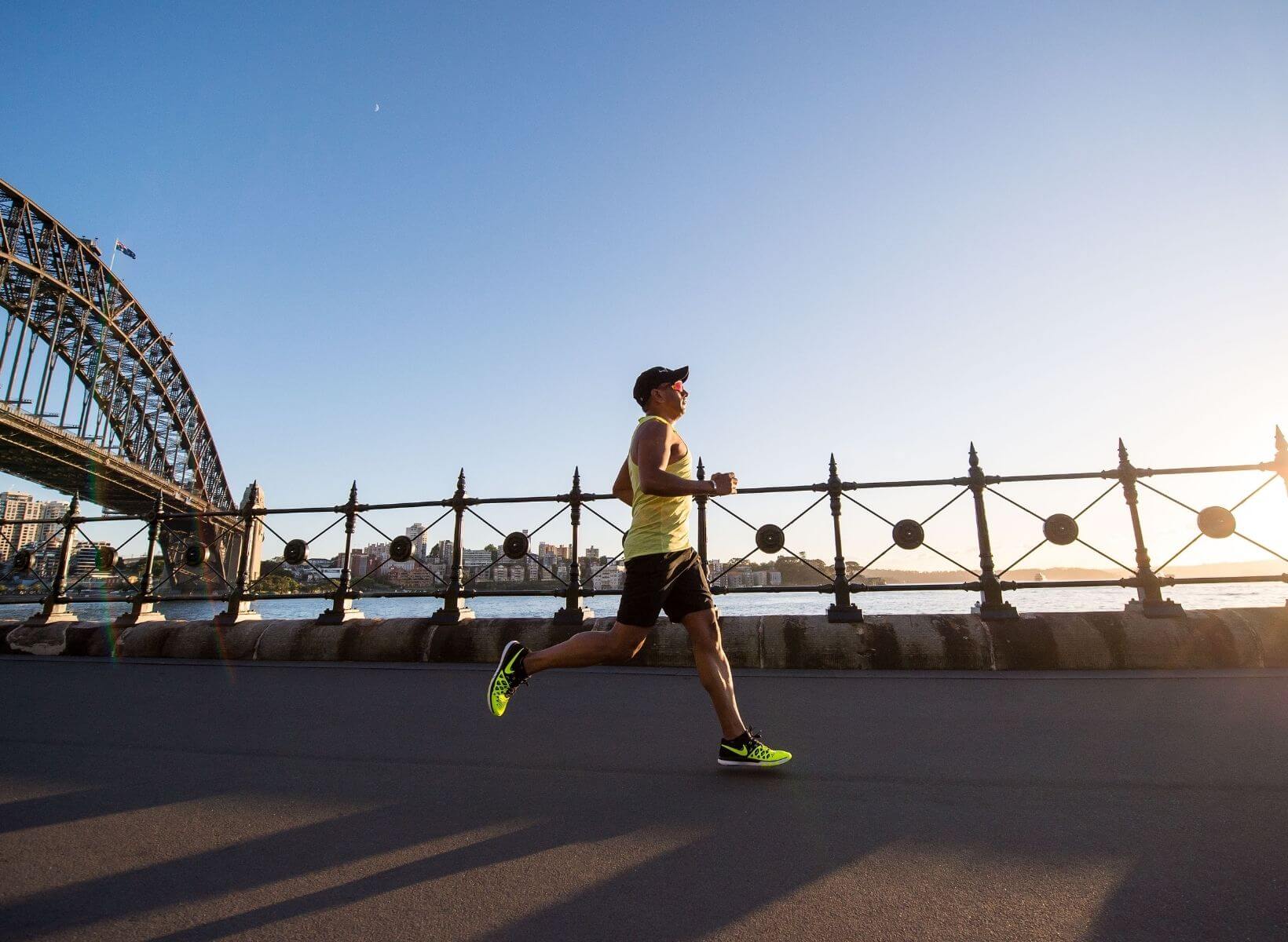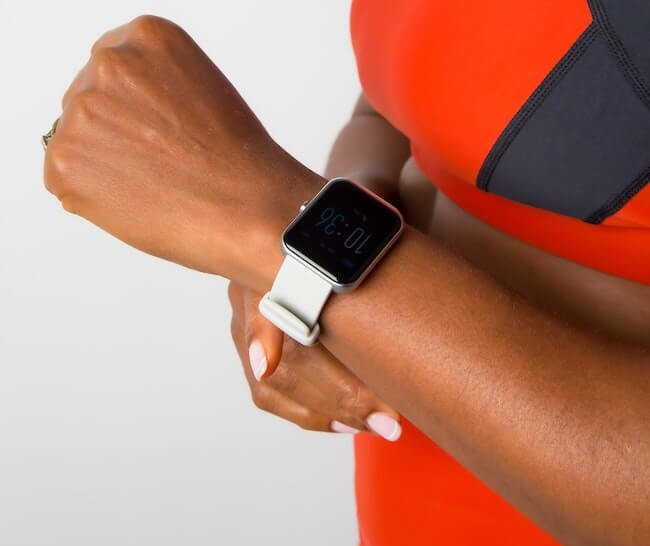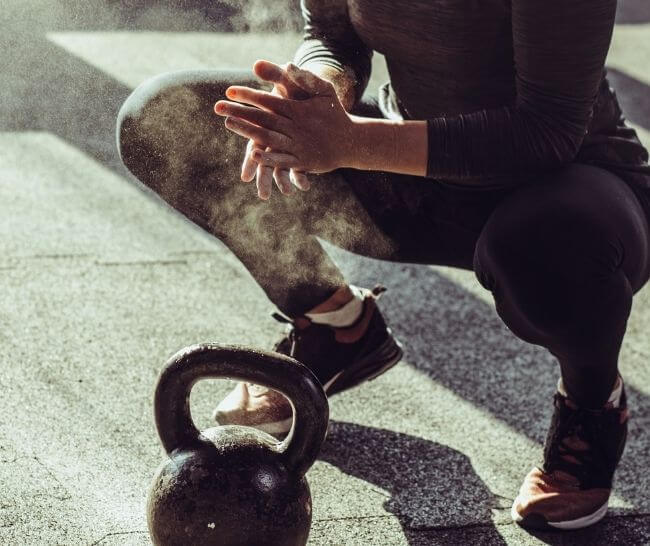Age and Metabolism
We’ve all heard that gaining weight is inevitable once you reach the middle-age years, particularly for women enduring the hormonal shifts, sweat-soaked sheets, insomnia, wicked moodiness, and pregnancy-level fatigue of menopause. We’re told to expect and accept that we can’t boost metabolism after 40—that biology happens.
Until the publication of a 2021 review in Science suggested your resting metabolism doesn’t start to slow at age 40.
The paper reviewed data from 6,500 participants, from 8 to 95, and determined that resting metabolic rate remains stable in adults ages 20 to 60<sup>1</sup> before declining less than 1% per year after age 60.
This turns what we thought about aging and metabolism upside down. That’s not a bad thing—it just means we should investigate strategies to take advantage of what our bodies are doing naturally.
There are things you can do to elevate your metabolic rate to burn more energy at rest. Food and nutrition, exercise, and consistency can all help activate your body’s metabolism. We will detail seven simple strategies for how to speed up your metabolism naturally, but first, there are a few basics of metabolism everyone should know.
Quick Primer on Metabolism
We expend energy in three ways:
- through digestion (dietary-induced thermogenesis)
- through activity (workouts as well as NEAT, non-exercise activity thermogenesis)
- during rest (body functions require energy).
Dietary-induced thermogenesis refers to the energy you expend breaking down food.
Before you get too happy about the fact that we burn calories digesting food, the amount of calories is pretty small. One scientific paper suggests a mixed diet at energy balance burns 5–15% of total calories on digestion<sup>2</sup>. If you ate about 1,800 calories, that would amount to 90–270 calories, which is less than the calories in your venti vanilla latte<sup>3</sup>.
How Nutrition Boosts Resting Metabolic Rate
Nutrition plays a huge role in maintaining your body’s natural metabolism. Maintaining a healthy metabolism might be challenging, but quick dietary fixes often lack flavor or leave us hungry and craving snacks throughout the day. Don’t let this be a deal-breaker. The first tip on our list will help you out!
If your regular diet isn’t working, making simple changes could be the most important key for boosting that stubborn metabolic rate. Here are some healthful food ideas you can always rely on to help steer your metabolism onto a faster path.
Chili Peppers and Other Capsaicin-Rich Foods
Research around capsaicin’s health benefits shows potential in treating a variety of diseases, rheumatoid arthritis, and treatment of pain inflammation<sup>4</sup>. The naturally occurring chemical that gives peppers and other spicy foods their kick also shows signs of boosting people’s metabolism<sup>5</sup>. Adding extra spice to meals through whole foods like chili peppers is a great option to add flavor, nutrients, and some healthy carbs to a meal, all while kickstarting your metabolism. If spicy food and your body are not on speaking terms, that’s okay, there are plenty of other options to choose from.
Lean Proteins
Eating lean protein sparks your metabolism through thermogenesis<sup>6</sup>: Simply adding poultry (chicken and turkey), lean beef (instead of ground beef), fish (think salmon or tilapia), or eggs to a meal gives your body the benefit of working to put that protein to use, and uses up a small amount of those calories you consumed to do so. Prepare your lean protein with healthy oils, like olive or coconut oil, and minimize breading.
Beans & Lentils
Don’t forget about vegetarian lean proteins. If meat is not your thing, beans and lentils provide a rich source of protein, fiber, and vitamins like folate and iron. Avocados are also a great option, and provide anti-inflammatory properties, and according to Lisa Moskovitz, RDN, “Inflammation can definitely interfere with a lot of different things in your body, one of which might be metabolism.” Avocados can help satiate hunger too, helping your body’s metabolism run while minimizing the need for in-between-meal snacks<sup>7</sup>.
Whole Grains
According to a recent study, whole grains reduce retained calories during digestion and speed up your metabolism<sup>8</sup>. Simply substituting processed grains, often found in breads, cereals, and rice, with whole-grain equivalents provides an easy way to eat filling foods that help boost your metabolism.
Drinking water—especially a glass or two before meals—adds multiple dietary benefits. Water helps your body digest and break down fiber and other nutrients and can give you a sense of feeling full, curbing that craving for an extra snack. Our cellular structure relies on water to replenish cells by helping them maintain their shape, with the importance likened to air making a balloon float<sup>9</sup>.
Did you also know water can boost your metabolism? Thermogenesis is the energy required to regulate your body’s ideal temperature, and one small study found that drinking about two cups of 71.6°F to 98.6°F water led to a 30% average increase in the metabolic rates of 14 healthy adults<sup>10</sup>.
This eat-food-and-burn-calories idea has legs, though. If you’re into it, focus on protein. Just keep in mind that your body can only use a certain amount of protein in a single sitting—about 20–30 grams of protein in one hour, depending on your daily needs (based primarily on activity level, gender, and amount of muscle mass).
How Activity Boosts Resting Metabolic Rate
Data reports that your total daily energy expenditure—how much energy your body needs to fuel activity, stay alive, and operate—increases with more fat-free mass, which is most commonly referred to as lean body mass<sup>11</sup>.
A small study on young adults found that lean body mass had the strongest correlation to participants’ resting metabolic rate, as did gender. Researchers posited that men generally have a higher RMR since men tend to carry more lean muscle mass than women<sup>12</sup>.
Fat-free mass includes your muscles, organs, bones, skin, connective tissue, and water—essentially, all of the things that make up your weight minus your body fat.
So, how do you get more fat-free mass? While you can’t grow more bones or organs, you can build muscle. You can do this in a variety of ways, all of which can be combined to provide a well-rounded strength training program.
3 Ways to Build Muscle:
<ul role="list"><li><strong>Lift heavy things</strong>: you can try lifting dumbbells, barbells, kettlebells, children, big dogs, grocery bags, your spouse, sandbags, tires (ew, but seriously <a href="https://www.youtube.com/watch?v=aEL9f81F8Do" target="_blank">CrossFitters do this</a>), large water jugs, or gallons of milk<sup>13</sup></li><li><strong>Leverage your body weight</strong>: push-ups, lunges, squats, and planks prove that you can feel the burn without any equipment.</li><li><strong>Resistance bands, pulleys, TRX</strong>: use these to increase and strengthen your natural range of motion as well as to recruit a variety of different muscles—the instability of the band encourages smaller muscles to work to keep the band stable.</li></ul>
Try combining several strength-building techniques with the methods outlined above, such as progressive overload, focusing on the eccentric phase of an exercise, integrating drop sets, and varying the duration of your workout and rest times.
These principles are best used to optimize an existing strength training program; if you’re a beginner, stick to the basics and concentrate on completing exercises with proper form. Prioritize safety and the health of your joints rather than straining to lift more weight. As you become stronger, the effort required to execute different exercises will get easier—that’s your cue to add weight or increase reps.
<hr class="read-mr">
Read more: Here is one of the most frequent questions among people who exercise. Find out the answer by checking out What’s Best? Protein Before or After a Workout?
<hr class="read-mr">
Good news: strength training may boost your VO2 max, so if you’ve already adopted this practice, keep it up<sup>14</sup>.
VO2 max refers to the volume of oxygen your body uses while exerting maximum effort (v = volume, O2 = oxygen, max = holy-smokes-that-was-hard effort). This measurement indicates cardiovascular fitness and aerobic endurance.
What type of exercise boosts VO2 max? High-intensity interval training (HIIT), endurance training, and possibly resistance training, depending on the intensity<sup>15</sup>.
As one study of 271 participants showed, those with higher resting metabolic rates also had significantly higher VO2 maxes and lean body mass<sup>16</sup>. People with lower resting metabolic rates also had higher body fat mass and belly fat.
An exercise routine of 20–45 minutes performed at 60–75% of max heart rate, when followed three to five times a week, increased RMR and VO2 max in men and women who were sedentary and overweight before the study<sup>17</sup>. Similar findings were reported in a smaller study on moderately obese women who showed a significant rise in RMR after 11 weeks of five hours per week of aerobic exercise at about 50% VO2 max<sup>18</sup>.
3 Ways to Build VO2 Max:
<ul role="list"><li><strong>Endurance-building exercise</strong>: Cycling or spinning, brisk walking, running, rowing, swimming, playing team sports, like soccer or Ultimate Frisbee that keep you moving, are all beneficial.</li><li><strong>HIIT workouts</strong>: Try this <a href="https://www.signos.com/blog/10-minute-hiit-workout">10-minute HIIT workout</a>; if you make it through and think you can do more, go for another round!</li><li><strong>Tabata workouts</strong>: A style of HIIT, Tabata is a higher-intensity version (ouch!) where the anaerobic intervals are shorter but completed at max effort. Here’s a short but spicy <a href="https://www.youtube.com/watch?v=6bYtysQO7pI" target="_blank">workout to try</a><sup>19</sup>.</li></ul>
Building VO2 max is challenging so if you’re a beginner, ease into it. Start with moderate-intensity endurance training a few times a week; build your stamina over time by adding a little bit of extra time or distance to your sessions. Get a solid foundation of endurance work for a few months before adding HIIT-style intervals.
{{mid-cta}}
How Much Exercise Do You Need to Boost Metabolism?
You’ve heard that moving your body burns calories, which shouldn’t come as any surprise. If you’re wondering how much exercise is required to boost your metabolism, the answer isn’t black and white. It’s possible you might not necessarily burn more calories the more or longer you work out.
A study of 332 adults living in five populations showed that total energy expenditure (aka TEE), or calories burned, plateaued above moderate activity levels<sup>20</sup>. Human and animal studies show that energy allocation for functions performed at rest may be reduced when physical activity increases. This adaptive measure results in decreased activity energy expenditure<sup>21</sup>.
Unless you are training for an endurance event, CrossFit competition, or another competition, you’re better off sticking to moderate amounts of activity.
For good health, the World Health Organization<sup>22</sup> recommends that adults ages 18–64 should:
- Complete 150–300 minutes of moderate-intensity exercise, 75–150 minutes of vigorous aerobic activity, or an equivalent combo of moderate and vigorous exercise each week.
- Perform at least two sessions of full-body strength training at a moderate or greater intensity level.
When you work out could play a role in your metabolism as well. As you discover what best fits your routine, don’t let this become a deterrent. Consistently squeezing in daily exercise is what’s most important, despite constant debate over what time of day your workouts take place.
It may actually be just as beneficial to break 30, 40, or 60 minutes of daily exercise into three to six 10-minute blocks. The Signos app recommends moving more in little spurts throughout the day—take a brisk 10- to 15-minute walk after a meal, climb stairs or jump rope or do kettlebell swings to stabilize glucose after a spike.
You’ve just fueled up using those great nutritional tips listed above. Your body is digesting that high-protein meal, either in the middle or at the end of a lengthy day, and all you probably want to do is sit down and relax for a minute. As fair and completely understandable as this might be, walking right after a meal keeps your metabolism running and puts all that newly ingested energy to good use<sup>23</sup>.
Just like tip #4, the goal with post-meal walking is not intensity, but just to keep things moving and ensure you are in fact doing your part to keep your metabolism churning.
Non-exercise activity thermogenesis (NEAT) entails the calories you burn while not exercising, eating, or sleeping. It’s the normal, everyday movements between your workouts that can add up to more energy burned all day long.
One small study showed that NEAT increased fat oxidation the day following a high-fat meal<sup>24</sup>. The Mayo Clinic estimated that NEAT movements could result in a max of 2,000 calories burned per day beyond the basal metabolic rate<sup>25</sup>.
Keep in mind that NEAT is one component of energy expenditure, but not a guarantee that you’ll burn more calories every day if you move more.
Research shows that a long-term increase in activity doesn’t necessarily translate into a boost in total energy expenditure because other components of TEE may decrease in response. One study of 1,754 people living “normal lives” suggested that only 72% of the extra calories we burn from increased movement translate into more total calories burned<sup>26</sup>.
This isn’t meant to dissuade you from moving around more, but rather to use this knowledge to build a movement plan that works even better for you.
Getting sufficient amounts of quality sleep cannot be understated in relation to your metabolism’s effectiveness. Research shows that sleep disruption has detrimental effects on metabolic health and even an increased incidence of type 2 diabetes and obesity<sup>27</sup>. Shortened or disrupted sleep can also impact your metabolism by decreasing your glucose tolerance and insulin sensitivity, as well as increasing your body’s production of ghrelin—the hormone that signals feelings of hunger.
<hr class="read-mr">
Related: Using Metabolic Workouts to Boost Your Metabolism
<hr class="read-mr">
As with many things in life, more isn’t always better. Sometimes it’s just more. When it comes to matters of metabolism, focus on what you can control such as diet, exercise, activity, and rest, then find which of these seven metabolism-boosting tips fit into your life.
References
1. https://www.science.org/doi/10.1126/science.abe5017
2. https://www.ncbi.nlm.nih.gov/pmc/articles/PMC524030/
3. https://www.starbucks.com/menu/product/2122164/
4. https://www.ncbi.nlm.nih.gov/pmc/articles/PMC5426284/
5. https://pubmed.ncbi.nlm.nih.gov/25849380/
6. https://www.nature.com/articles/1600578
7. https://www.ncbi.nlm.nih.gov/pmc/articles/PMC6567160/
10. https://pubmed.ncbi.nlm.nih.gov/14671205/
11. https://www.science.org/doi/10.1126/science.abe5017
12. https://digitalcommons.wku.edu/ijesab/vol8/iss8/74/
13. https://www.youtube.com/watch?v=aEL9f81F8Do
14. https://pubmed.ncbi.nlm.nih.gov/16307157/
15. https://www.researchgate.net/profile/Todd-Astorino/publication/
16. https://www.sciencedirect.com/science/article/abs/pii/S2451847620301299
17. https://journals.humankinetics.com/view/journals/ijsnem/
18. https://europepmc.org/article/med/3492457
19. https://www.youtube.com/watch?v=6bYtysQO7pI
20. https://www.cell.com/current-biology/fulltext/
21. https://journals.lww.com/acsm-essr/fulltext/
22. https://www.who.int/news-room/fact-sheets/detail/physical-activity
23. https://www.ncbi.nlm.nih.gov/pmc/articles/PMC3119587/
24. https://www.mdpi.com/2075-1729/10/9/166
25. https://www.sciencedirect.com/science/article/abs/pii/
- Item 1
- Item 2
- item 3
































